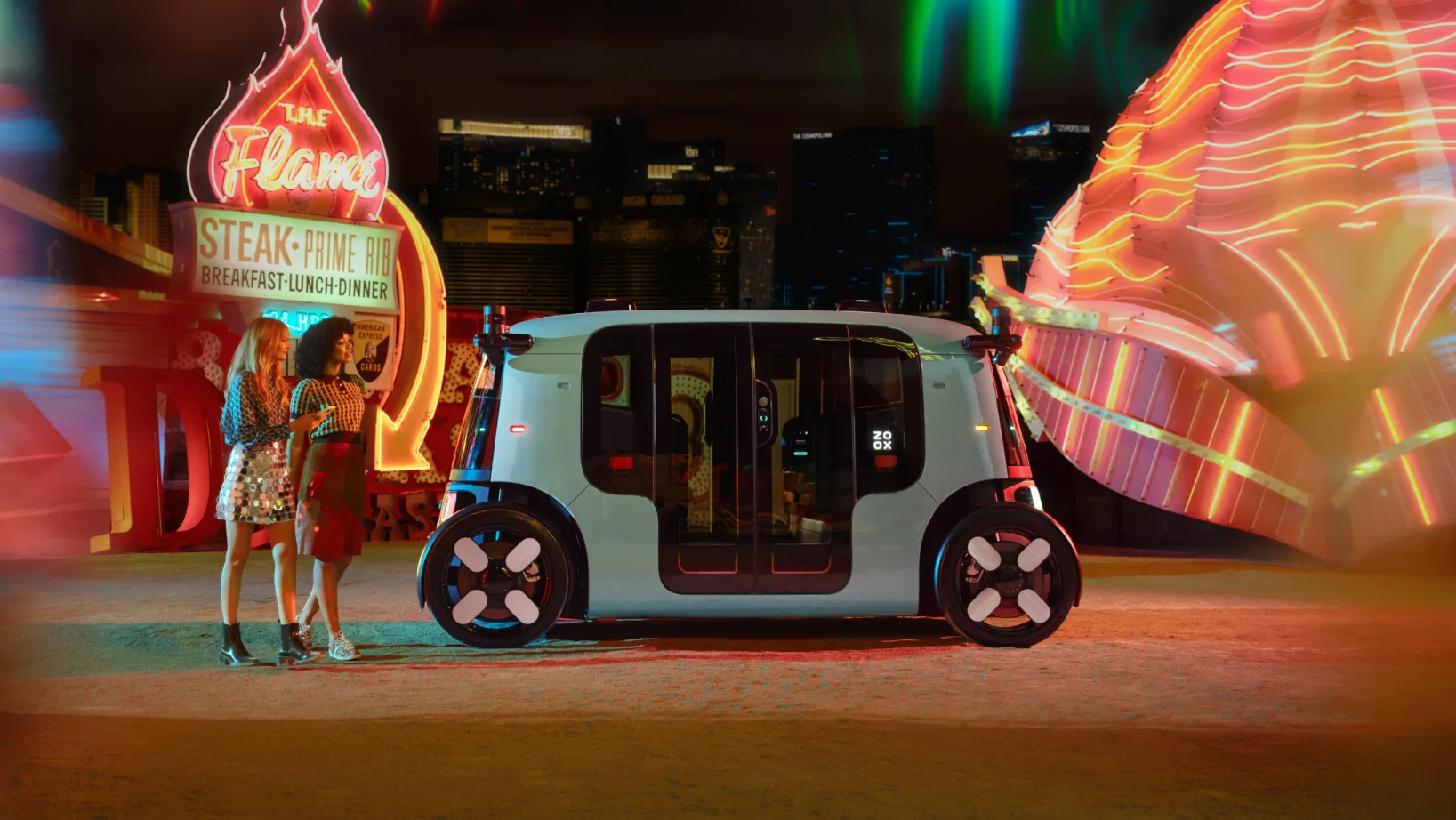Robotaxis are no longer a distant dream — they’re rolling out across cities from Phoenix to Wuhan, reshaping how we move. In this deep-dive, we explore the state of play in 2025: who’s leading, who’s stalled, and what the next decade of autonomous ride-hailing could look like.
Table of Contents
What Counts as a Robotaxi?
A robotaxi isn’t just a self-driving car. It’s a 100% autonomous ride-hailing service — no driver, no safety operator behind the wheel, just a vehicle that picks you up and drops you off inside its approved zone. In industry terms, that’s SAE Level 4 automation.
Where You Can Actually Ride Today
United States
- Waymo One (Alphabet) – Live in Phoenix, San Francisco, Los Angeles, and Austin. Passed 10M paid rides in 2025. Recently expanded LA service areas and integrated with Uber in Austin.
- Zoox (Amazon) – Granted an NHTSA exemption in 2025 to operate its funky, steering-wheel-free pods. Vegas launch coming soon.
- Cruise (GM) – Shut down its robotaxi program at the end of 2024 after regulatory fallout in San Francisco.
- Tesla – Piloting “CyberCab” service in Austin, but safety monitors are still onboard, so it’s not yet a true robotaxi.
China
- Baidu Apollo Go – 11M+ rides so far, with 24/7 fully driverless service zones in Wuhan and pilots in Beijing.
- Pony.ai – In 2025, received permits for fully driverless service in Shanghai’s Pudong, adding to Beijing, Guangzhou, and Shenzhen.
Middle East
- TXAI (WeRide, Abu Dhabi) – Driverless trials began in 2025. Service includes Yas and Saadiyat islands, with airport trips on the horizon.

Quick Scoreboard (2025)
| Company | Where Active | Rider-Only? | Notable Points |
| Waymo | Phoenix, SF, LA, Austin | ✅ Yes | >10M rides; Uber partnership |
| Baidu | Wuhan, Beijing + more | ✅ Yes | 24/7 ops in Wuhan |
| Pony.ai | Beijing, Shanghai, GZ, SZ | ✅ Yes | First across all tier-ones in CN |
| Zoox | Vegas (soon) | 🚧 Imminent | First U.S. pod w/out controls |
| WeRide | Abu Dhabi | 🚧 Trials | Expanding coverage |
| Tesla | Austin | ❌ Not yet | Safety monitors onboard |
| Cruise | — | ❌ Exited | GM pulled plug 2024 |
Market Conditions
- Scale: Waymo and Baidu are pulling ahead — each handling millions of rides. China is scaling fastest city by city.
- Safety: Data suggests reduced crash rates vs human drivers (esp. for pedestrians and cyclists). Still, recalls and audits are part of the game.
- Regulation: California cautiously greenlit Waymo expansions; Texas is tightening rules from Sept 2025. NHTSA’s approval of Zoox marks a watershed moment. China is racing ahead with city-level permits, while Abu Dhabi is building showcase corridors.
- Economics: Baidu’s 6th-gen robotaxi claims a 60% cost reduction per vehicle, aiming for real unit economics. Analysts still peg the broader autonomous driving market at $300B–$400B by 2035.
Player Profiles
Waymo One

Waymo has become the face of robotaxis in the U.S. Its fleet of Jaguar I-PACEs and Chrysler Pacificas has already given over 10 million rides in cities like Phoenix, San Francisco, Los Angeles, and Austin. You can hail a ride directly through the Waymo app, and in Austin, even through Uber. Waymo stands out for both scale and transparency — publishing detailed safety data to back up its expansion.
Baidu Apollo Go

Baidu’s Apollo Go is the world’s most widely used robotaxi service, clocking over 11 million rides. It operates around the clock in Wuhan and continues to expand across Beijing and other major cities. Baidu’s strategy is tied closely to local governments, and its sixth-generation vehicles cut costs dramatically — signaling a push toward profitability at scale.
Pony.ai

Pony.ai has built deep partnerships with automakers like Toyota, GAC, and SAIC, giving it a strong production base. In 2025, it secured full driverless permits in Shanghai’s Pudong, making it one of the first to run paid services across all four of China’s tier-one cities: Beijing, Shanghai, Guangzhou, and Shenzhen. Pony.ai is a front-runner in the regulatory race.
Zoox

Zoox, backed by Amazon, is the first U.S. company cleared to operate a vehicle designed from the ground up without a steering wheel or pedals. The pod-like shuttles are symmetrical, driving forward or backward equally. Las Vegas will be its launch city, and with federal approval now in hand, Zoox could reshape the public’s idea of what a robotaxi looks like.
WeRide (TXAI)

In Abu Dhabi, WeRide powers the TXAI service in partnership with local authorities. Its robotaxis are already running trials on Yas and Saadiyat islands, with plans for airport trips. The Gulf region is leaning into autonomous mobility as a showcase — and WeRide is well-positioned to benefit from this top-down support.
Tesla CyberCab

Tesla’s long-promised robotaxi ambitions are taking shape under the “CyberCab” branding. In mid-2025, Tesla began piloting monitored rides in Austin using its camera-only Full Self-Driving stack. While not yet truly rider-only, Tesla’s vast global fleet means that if it solves autonomy, it could scale faster than anyone. For now, it’s still a promise in progress.
What Changed in 2025
- Waymo hit 10M rides and expanded into Austin & LA County.
- Zoox secured NHTSA approval for public demos.
- Pony.ai got full permits in Shanghai’s Pudong.
- Tesla began monitored Austin pilot.
- Cruise officially shut down operations.
- Abu Dhabi’s TXAI moved into driverless trials with WeRide.
Outlook: 2026 and Beyond
- Expect more airport links and freeway segments to open up.
- Zoox and other pod-style designs may finally hit public roads.
- China’s lead in scale will likely widen — more zones, more rides.
- The Gulf will continue positioning itself as a showcase for futuristic mobility.
- In the U.S., it’s Waymo vs. Zoox, with Tesla still trying to prove it belongs.




